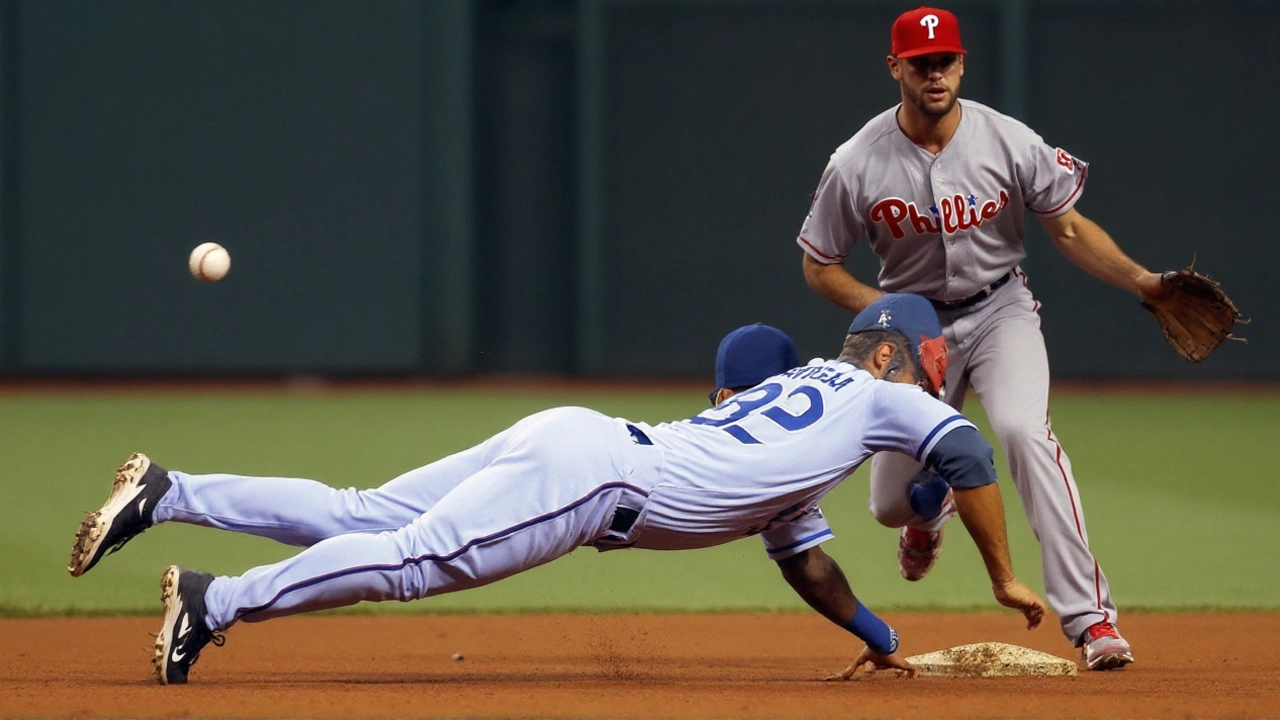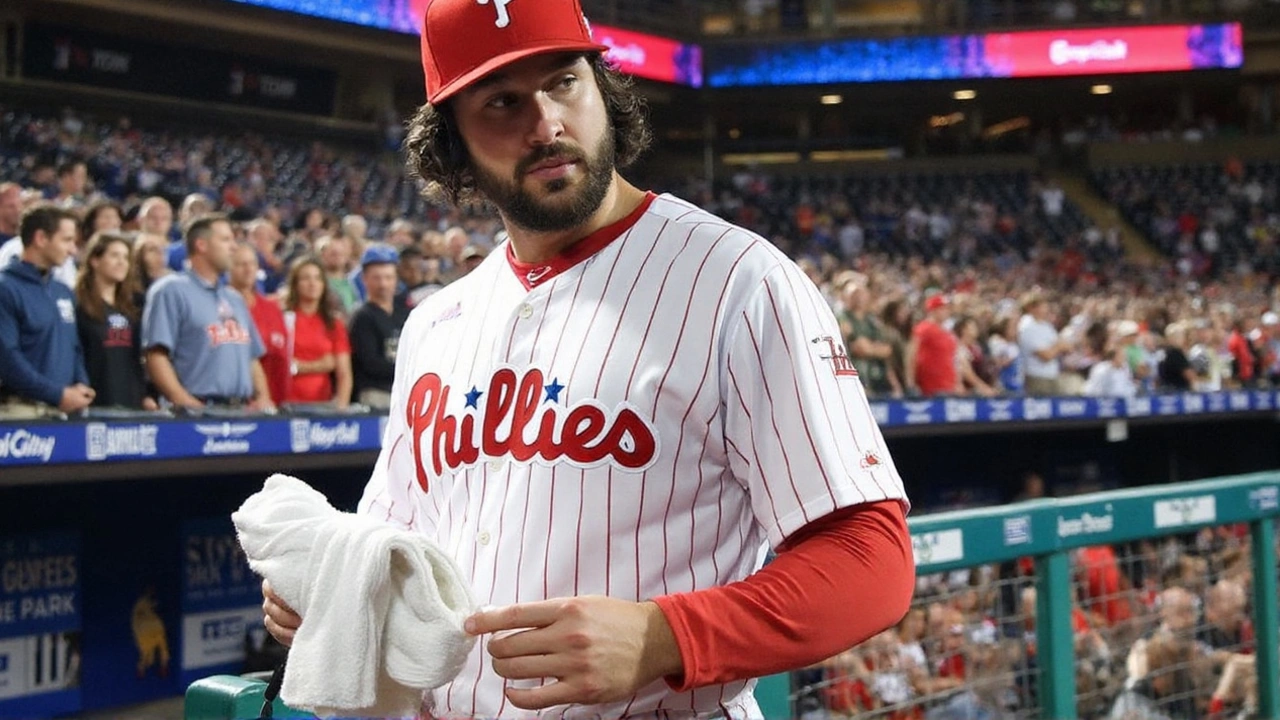Phillies overpower Royals 8–2: what we learned
The tone was set early and never really changed. The Philadelphia Phillies handled the Kansas City Royals 8–2 on Sept. 12, 2025, at Citizens Bank Park, the kind of tidy, businesslike win you expect from a first-place team in September. It stretched Philadelphia’s surge—now 8 wins in their last 10—and tightened their grip on the division at 88–60.
Philadelphia has been winning with balance. The offense is humming at 5.7 runs per game, and the run prevention has been razor-sharp, allowing just 2.8 per contest in this recent push. That combination is why they’re not just winning but winning by margin. On nights like this, the lineup stacks professional at-bats, the pitching staff pounds the zone, and the little edges—baserunning, defense, bullpen sequencing—tilt their way.
Kansas City showed flashes but couldn’t keep pace. The Royals entered 74–74, third in the AL Central and 10 games back, and their road pattern showed up again. They’ve been a different team away from Kauffman Stadium (34–39). On nights when they don’t get early damage from their big bats, they get stuck playing uphill.
Individual talent isn’t the Royals’ problem. Bobby Witt Jr. continues to be the heartbeat, carrying a .293 average into the game and forcing pitchers to protect every quadrant. Vinnie Pasquantino has provided thump with 30 homers, and when he sees spin up in the zone, he can flip a game fast. The issue is timing and support—too many empty innings between the loud contact. Against a deep, disciplined staff like Philadelphia’s, that gap gets exposed.
Kyle Schwarber remains the tone-setter for the Phillies’ lineup. His profile this season—133 hits, a .369 on-base percentage, a .560 slug, and a .242 average—captures his blend of patience and power. When he’s seeing pitches and getting on ahead of the middle, the rest of the order gets premium looks. Pitchers can’t live on the edges forever when traffic keeps building.
Citizens Bank Park also played its part. The yard is friendly to pull-side power and rewards balls in the air, especially for left-handed hitters who get lift. Combine that with a patient lineup that doesn’t chase, and you see why nights snowball for visiting staffs. Kansas City wasn’t blown off the field; they were nudged inning by inning until the scoreboard looked lopsided.
There’s also the interleague wrinkle. Philadelphia’s been sharp at home against American League opponents, particularly in night games, where routine, scouting, and matchup planning pay off. That’s not a one-off trend; it’s how a contender treats crossover series—fewer freebies, cleaner defense, stronger finish in the late innings.

Odds, tips, and betting trends after the matchup
Books likely positioned this as a home-favorite spot for Philadelphia, with market support on the run line given their recent margin of victory and the Royals’ road skid. Even without a posted number here, the setup was classic: hot, balanced home team vs. .500 club struggling to string wins together away from home.
How does this result sharpen the picture going forward? A few clear angles stand out.
- Run-line lean with Philadelphia: When the Phillies stack patient at-bats and get length from their starters, they don’t just win—they separate. Their recent scoring and run prevention profile supports -1.5 positions in similar spots, especially at home.
- Interleague night-game edge: Philadelphia’s preparation against AL lineups shows up in pitch selection and bullpen usage. In these crossover games, they limit big innings and grind opposing starters. Bettors have been rewarded by staying aligned with that pattern.
- Royals on the road: Kansas City’s 34–39 away mark isn’t a blip. They struggle to sustain rallies in unfamiliar parks and often need a single big swing to stay live. If that swing doesn’t come early, late-inning leverage usually tilts against them.
- First five markets: With Philadelphia’s starters getting ahead in counts and Kansas City’s offense prone to slow starts on the road, first five innings pricing can offer value—whether it’s the moneyline for the favorite or a cautious play on the under in tighter pitching matchups.
- Totals are matchup-driven: Citizens Bank Park can push numbers up, but the Phillies’ staff has been suppressing damage. If Kansas City doesn’t contribute runs, totals lean lower than the park suggests. When the Royals’ core is clicking, the scale tips fast. Lineup cards and bullpen status matter more than any single trend here.
What should bettors watch in the next meetings between these teams? Three things: who wins the strike-zone battle, how quickly Kansas City establishes base traffic, and whether Philadelphia can keep wearing down starters by the fourth and fifth innings. If the Phillies are racking up deep counts again, their late offense tends to open the door for run-line covers.
Player market notes: Schwarber’s approach makes total bases and walks props worth monitoring when he’s seeing the ball. For Kansas City, Witt Jr.’s speed and gap power can turn routine nights into two-base opportunities in a heartbeat; he also drags infield positioning out of comfort. Pasquantino’s power keeps RBI markets alive even in tough matchups—but he needs table-setters ahead of him to cash those tickets.
Context matters in September. Bullpens carry heavy workloads, managers shorten rotations, and matchups get more surgical. Philadelphia’s depth gives them options—matchup bats off the bench, multiple looks in the late innings, and enough strike-throwers to avoid free passes. Kansas City has to win on contact quality and keep games in the middle innings; if they chase early or get behind the count, their margin disappears.
This 8–2 result didn’t happen by accident. It was a reflection of form, environment, and approach. The Phillies are behaving like a postseason team—methodical, patient, and ruthless with traffic on the bases. The Royals are still searching for the two- or three-batter stretches that flip frames on the road. Until that turns, the market will keep leaning toward Philadelphia in this matchup, especially in night games at Citizens Bank Park.
As the calendar ticks down, every angle sharpens. The Phillies want home-field leverage and a rested bullpen for October. The Royals want a winning record and a stronger road identity to carry into the offseason. For bettors, the signals are clear right now: back the hotter team in the cleaner environment, price in the park, and make the bullpen chart your best friend before you click submit.

